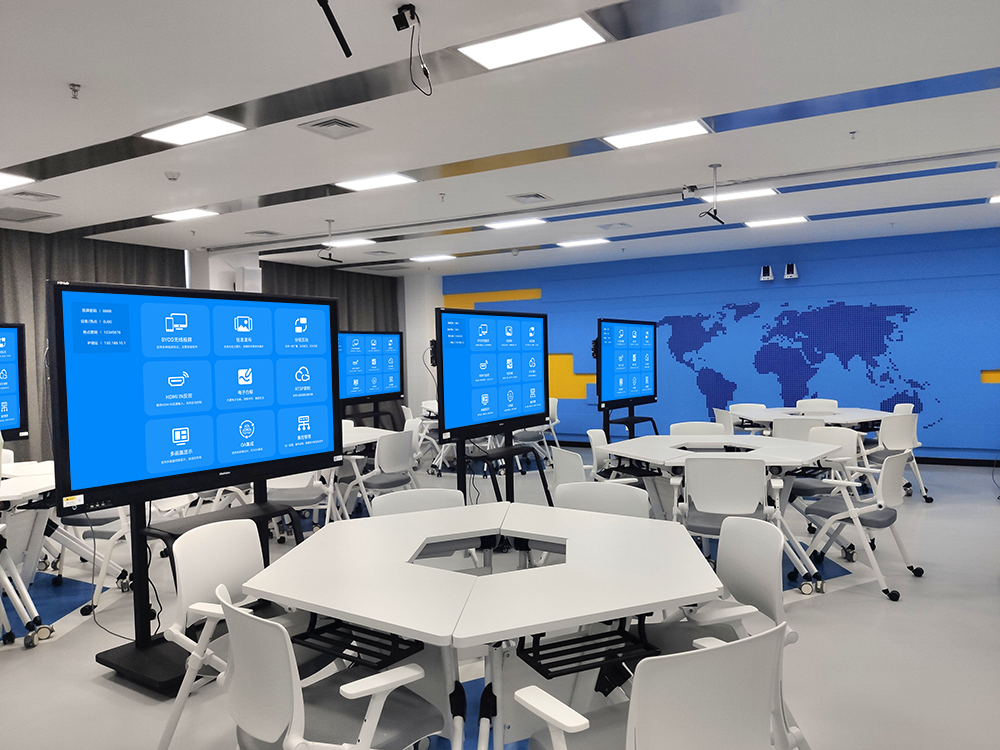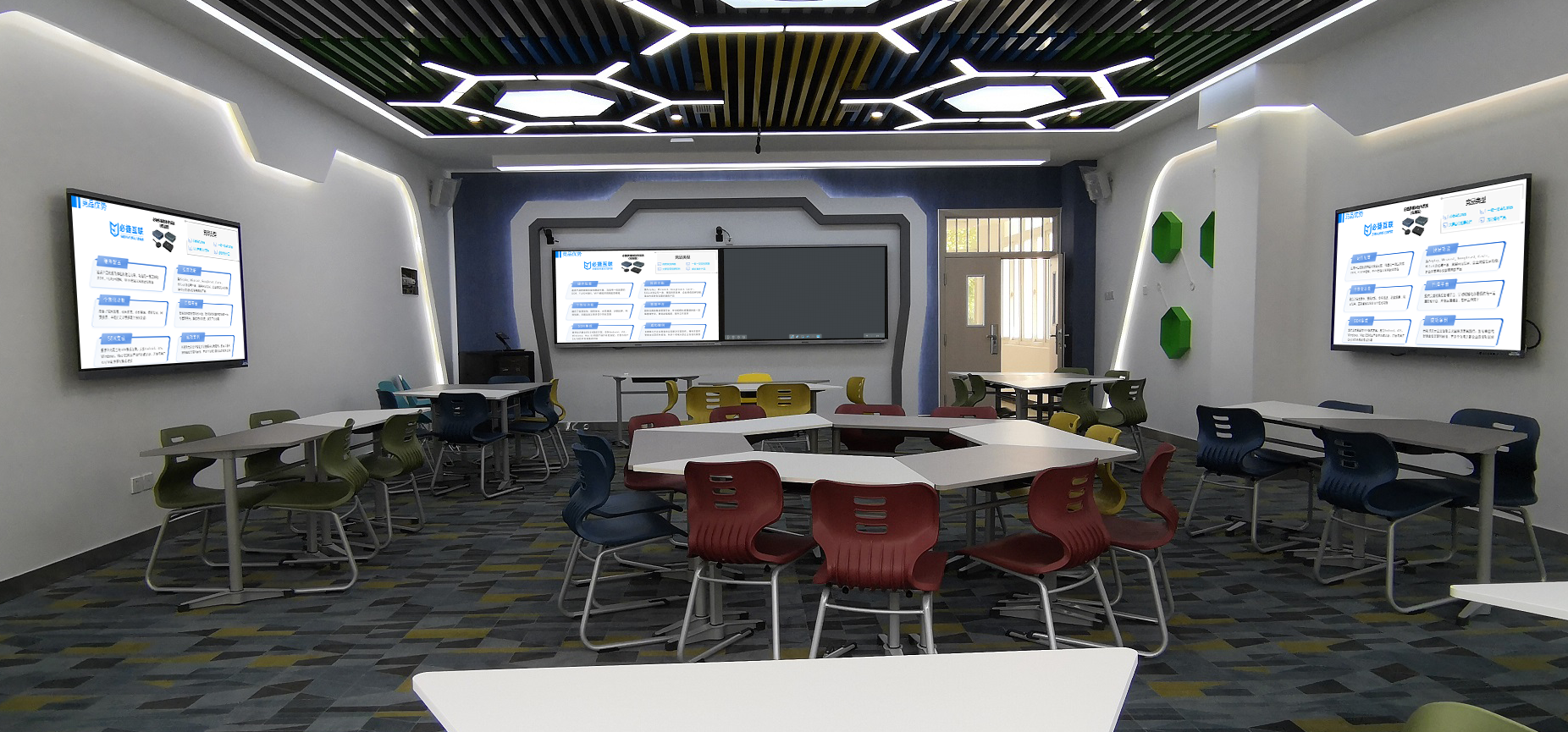Smart Classrooms: An Immersive Teaching Solution
The core of a smart classroom is to facilitate the shift from one-way lectures to two-way interaction. Through device linkage, resource flow, and scenario-based function design, this solution makes courseware displays more flexible and teacher-student interaction more in-depth, covering the entire teaching process from pre-class to post-class.
I. Device Linkage: Seamlessly Connecting Teaching Tools
Automatic Multi-Terminal Networking: The classroom’s main screen, the teacher’s tablet, and students’ devices can automatically form a connected network, without the need for repeated setup. When a teacher walks into the classroom with a tablet, the courseware automatically mirrors to the main screen. If they walk to a student’s desk, they can tap the “take over” button on the tablet to move the main screen’s content to the tablet for close-up explanations.
Universal Device Access: Students’ phones, tablets, and other devices can mirror their problem-solving drafts and lab photos to their group’s small screen or the main screen for the whole class in 3 seconds by scanning a QR code on the desk. This is compatible with both new and old devices, as well as Android and Apple systems, with a compatibility rate of over 99%, preventing any issues with devices being unable to mirror content.
II. In-Class Interaction: Bringing the Classroom to Life
More Flexible Courseware Displays
- A teacher can control the main screen’s courseware with their tablet by swiping to turn pages and drawing circles with their finger to highlight key points. The annotations appear on the large screen in real time and can be marked with different colors.
- When a teacher is explaining additional information, they can use their phone to search for a short video and quickly mirror it to the large screen by being near the terminal, without having to switch the mirroring source. This makes explanations more intuitive.
- Even older teaching equipment can be integrated. After connecting a visualizer, the details of an experimental setup can be mirrored to the main screen. The teacher can use their phone to zoom in on a reagent changing color, so students in the back can clearly observe it.
Unrestricted Teacher-Student Interaction
- Students can join the classroom system by scanning a QR code, and their submitted homework is automatically compiled on the main screen in a split-screen view. The teacher can select a piece of homework, enlarge it for explanation, and the annotations are synchronized to the student’s device in real time.
- During group discussions, members can use their devices to mirror their group’s mind map. After the content is displayed side-by-side in a split-screen view, the whole class can compare different ideas. The teacher can use a stylus on the large screen to circle the highlights, accelerating the conversion of discussion results.
- In a lab class, a portable mirroring terminal can be connected to a mobile screen. Students can film their procedure and mirror it, allowing the teacher to observe it in real time on the large screen and correct any issues on the spot. It supports a four-way split-screen view for multiple groups presenting at the same time, so there’s no need to check each device individually, and guidance is more comprehensive.

III. Post-Class Extension: Preserving Teaching Records
- Convenient Reuse of Teaching Resources: The courseware, student homework, and teacher annotations from the class are automatically saved to the class resource library. Students can scan a QR code to retrieve the complete content for review and can also watch a playback of the mirrored video recorded in class, so they can catch up on any missed knowledge points at any time.
- Teaching Data for Optimization: Teachers can use the terminal backend to view class data, such as which courseware segments were mirrored most often and common mistakes in students’ homework. This helps them accurately determine key teaching points and makes their adjustments to the teaching plan more targeted.
IV. Management and Maintenance: Stable Support Without Chaos
- Real-Time Device Status Monitoring: An administrator can use a cloud platform to check the status of classroom devices in real time, including whether the main screen is online or if a mirroring terminal has a problem. They’ll receive a real-time alert on their phone and can complete firmware upgrades and parameter adjustments remotely, without having to check each classroom individually.
- Permissions and Security Management: The system sets permissions by class time. During class, only students and teachers in that class are allowed to mirror content, preventing interference from outside devices. After class, visitor permissions are automatically enabled, which is convenient for teachers to communicate. All mirroring activity is logged, ensuring the security of teaching data.
This solution turns devices into the “invisible assistants” of teaching. It reduces the teacher’s operational costs and lowers the barrier for students to interact, helping smart education truly integrate into the daily classroom.